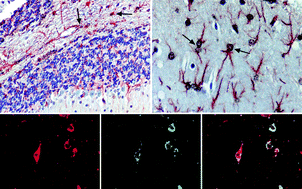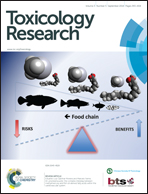Evaluation of changes in monoamine levels and apoptosis induced by cyfluthrin in rats
Abstract
The aim of this study was to evaluate monoamine and mitochondrial cytochrome c levels and lipid peroxidation in adult male rats treated with cyfluthrin (14 mg kg−1 dose; approximately 1/10 of the LD50 value) for 14 days. This study also examined cyfluthrin induced apoptosis via the signaling proteins Bcl-2, caspase-9 and caspase-3, and possible anti-apoptotic effects of alpha-basic crystallin (αB-c). Levels of epinephrine (E), norepinephrine (NE) and serotonin (5-hydroxytryptamine, 5-HT) in the plasma and 5-HT and its metabolite 5-hydroxyindoleacetic acid (5-HIAA) were measured in the striatum to assess neurotransmitter modification. Cyfluthrin administered to the plasma significantly reduced the levels of E and NE and increased 5-HT levels, with no significant increase in lipid peroxidation. In the striatum, cyfluthrin intoxication resulted in a significant increase of the level of 5-HIAA but no significant increase in 5-HT. Apoptosis was detected in astrocytes without a change in the level of cytochrome c but was not detected in neurons. Immunohistochemically caspase-9 positive and Bcl-2 negative neurons were identified. Although these neurons were also negative for both TUNEL staining and caspase-3, they were positive for αB-c. The present study may indicate that cyfluthrin toxicity appears first in neuronal supportive cells, especially astrocytes, rather than in neurons, and that in neurons, αB-c can inhibit the activation of caspase-3 and block apoptosis. In conclusion, our findings support the hypothesis that repeated exposure to cyfluthrin alters neurotransmission of E, NE and 5-HT and induces apoptosis. These data may therefore be important for assessing the safety of cyfluthrin.


 Please wait while we load your content...
Please wait while we load your content...